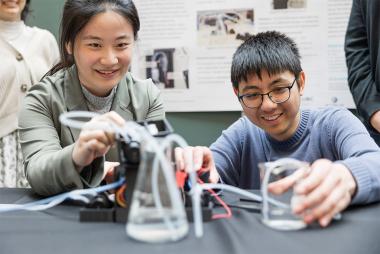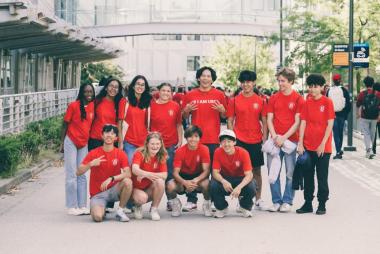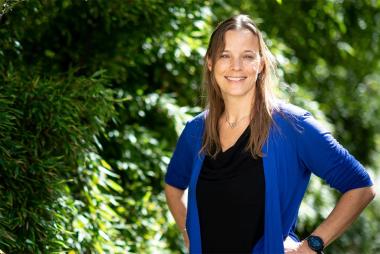Quantifying the bond between SARS-CoV-2 and human cell receptors

October 16, 2020
The following article originally appeared on the website of UBC's Department of Mechanical Engineering.
At its heart, mechanical engineering is the understanding of energy transfer and forces, physics concepts not usually associated with medicine. However, even at the scale of a human cell, those concepts are at play, and understanding them could be the key to designing effective treatments. SARS-CoV-2 is a tiny particle that has stopped the world, but even it obeys the laws of physics.
Mauricio Ponga, an assistant professor in UBC’s Department of Mechanical Engineering, has applied his expertise in applied solid mechanics and computational mechanics to the problem that is plaguing scientists all over the world: how can we stop SARS-CoV-2 from entering a cell and reproducing? He has found a part of the answer, and it’s the amount of energy involved in the connection between the virus that causes COVID-19 and the cell it hijacks.
Coronavirus gets its name from the Latin word for “crown,” as it is wreathed by spike proteins (S-proteins) it uses to attach to cell receptors. The angiotensin-converting enzyme 2 (ACE2) receptors on cells in our lungs, heart, arteries, kidneys and intestines are meant to help us lower our blood pressure. However, the S-proteins of SARS-CoV-2 have amino acid residues (simply called “residues”) that bind to other residues on ACE2. Once an S-protein binds to an ACE2 receptor, more ACE2 receptors are drawn to the area and connect with the virus, bending the cell membrane until it eventually envelopes the virus within the cell. This is the process that many potential therapeutics like drugs and vaccines are trying to stop. Researchers knew the strength of the connection was within a range of 10-20 KBT, but the actual number was unknown until now.
Ponga says, "Before this work there was no calculation of this [S-protein receptor binding energy] for any virus. So I provided a calculation with molecular dynamics of that energy; what I found is the number is 20.5 [KBT], which is on the top of the scale. So it’s a very, very strong connection."
Using reconstructions of the atomic structure of SARS-CoV-2, Ponga was able to run simulations identifying which amino acid residues of the virus’ spike protein and the ACE2 receptors are responsible for bonding, and seeing how much energy would be released by trying to pull them apart. This led him to the discovery that the S-protein receptor binding energy was at the top of the predicted range, as well as to the intriguing discovery that the residues change with the distance between the two proteins.
Both of these discoveries have implications for designing treatments and vaccines. By finding how much energy is involved in the adhesion between the virus and the cell receptor, Ponga has been able to analyze the amount therapeutics would need to reduce that energetic bond by in order to be effective – calculations revealed a 50% reduction would prevent the virus from entering the cell. Also, by identifying the active residues involved in bonding as they change with distance, therapeutics could be designed to target them more specifically. He uses the metaphor of a piece of tape – on its own it has an adhesive surface, but once you cover that surface with dust it can no longer attach to anything. Now we know how much dust we need to use, and what kind.
Reality is a bit more complicated, as his simulations reveal that the density of receptors in a cell can change the amount by which the energetic bond would need to be reduced, but there are still benefits to even a partial reduction in adhesion. If half the S-proteins in SARS-CoV-2 can be blocked it will be prevented from attaching to a cell, but blocking fewer will still slow down the adhesion process, allowing the immune system more time to fight the infection. Ponga’s analysis provides rates at which this slow-down would occur.
Looking at the smallest parts of this tiny virus, and using his knowledge about how energy functions at the molecular level, Ponga has found something that could contribute to the global fight against this deadly disease.
His findings have been published by Nature Research journal Scientific Reports in the article “Quantifying the adhesive strength between the SARS-CoV-2 S-proteins and human receptor and its effect in therapeutics”. Scientific Reports is an open access publication, and the article is available in full at Quantifying the adhesive strength between the SARS-CoV-2 S-proteins and human receptor and its effect in therapeutics.


